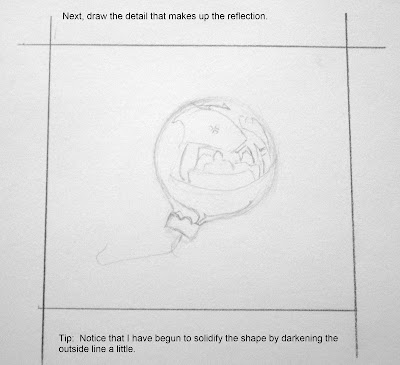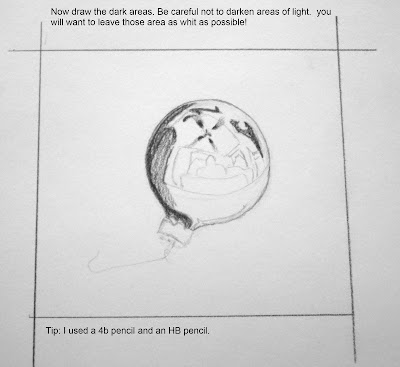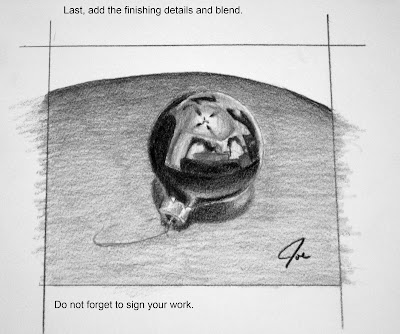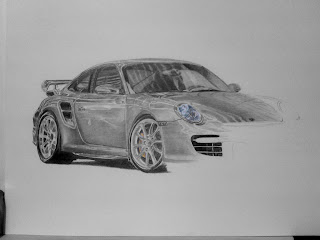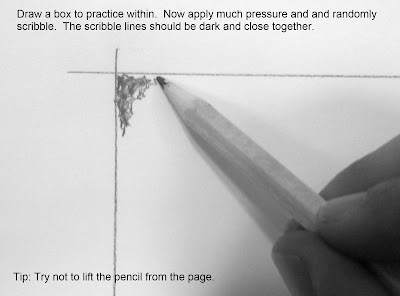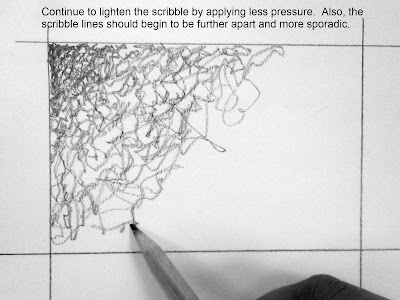 Hey thanks everyone who has been reading and participating with the drawing! Have a merry Christmas!
Hey thanks everyone who has been reading and participating with the drawing! Have a merry Christmas!I have included a video on how to shade with color pencil. Hope you enjoy.
http://www.youtube.com/watch?v=HQ3a6fdnTic
 Hey thanks everyone who has been reading and participating with the drawing! Have a merry Christmas!
Hey thanks everyone who has been reading and participating with the drawing! Have a merry Christmas! In the Picture above you will notice that I have a basic skeleton drawn lightly on the page. You will also notice that I have already put some color down in a layering process. I usually go from light to dark. However in this case I have noticed that sometimes it is beneficial to add the darks right away.
In the Picture above you will notice that I have a basic skeleton drawn lightly on the page. You will also notice that I have already put some color down in a layering process. I usually go from light to dark. However in this case I have noticed that sometimes it is beneficial to add the darks right away.  For instance....notice the bottom side of the boat in the above picture. I have gone ahead and drawn the darkest lines possible where the shadows are. In the original picture there is a reflection of blue water on this side of the boat. As I observe the original picture I notice that the black slowly fades into indigo blue then marine blue, then true blue, then sky blue. Typically I would layer from light to dark. But, in this instance I thought of something: If one draws a darker color of the lighter the lighter colors value is zero. But, If I color the lighter color blue it creates a kind of a half shade on top of the black creating a slower movement through out the spectrum of the color blue. And since I am in need of a slow smooth transition this is perfect. This seems to work well with color pencil as it has a waxy translucent finish.
For instance....notice the bottom side of the boat in the above picture. I have gone ahead and drawn the darkest lines possible where the shadows are. In the original picture there is a reflection of blue water on this side of the boat. As I observe the original picture I notice that the black slowly fades into indigo blue then marine blue, then true blue, then sky blue. Typically I would layer from light to dark. But, in this instance I thought of something: If one draws a darker color of the lighter the lighter colors value is zero. But, If I color the lighter color blue it creates a kind of a half shade on top of the black creating a slower movement through out the spectrum of the color blue. And since I am in need of a slow smooth transition this is perfect. This seems to work well with color pencil as it has a waxy translucent finish. Give it a try with a shadow that you find somewhere. You might be surprised what happens!
Give it a try with a shadow that you find somewhere. You might be surprised what happens!


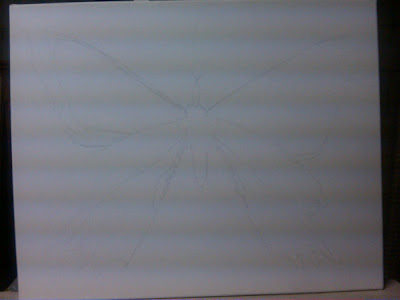 with paints. This half way done butterfly is an acrylic piece that I have been working on that started out OK and has gotten better and better. I learned a few things and thought that I would mention them.
with paints. This half way done butterfly is an acrylic piece that I have been working on that started out OK and has gotten better and better. I learned a few things and thought that I would mention them. 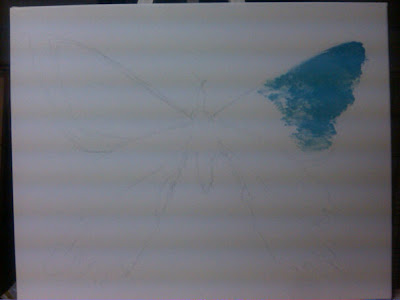 The first: Painting is best described in layers. I have noticed that be the use of layers one can achieve a fairly realistic piece.
The first: Painting is best described in layers. I have noticed that be the use of layers one can achieve a fairly realistic piece. 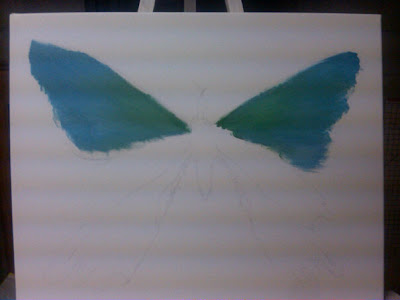 The butterfly for example, is being painted in layers. This is fairly different than working with pencil in the sense that the pencil is done like a
The butterfly for example, is being painted in layers. This is fairly different than working with pencil in the sense that the pencil is done like a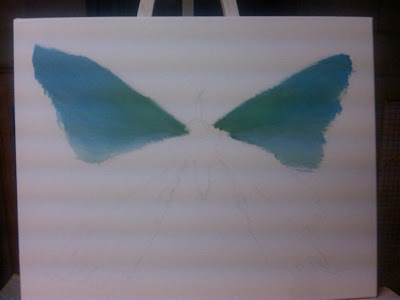 map of shades. In other words, I like to start my drawing in the upper left corner and work my way down to the lower left keeping my page free of unwanted smears(hopefully).
map of shades. In other words, I like to start my drawing in the upper left corner and work my way down to the lower left keeping my page free of unwanted smears(hopefully).  However, with the painting, I can just start throwing color on the page.
However, with the painting, I can just start throwing color on the page. 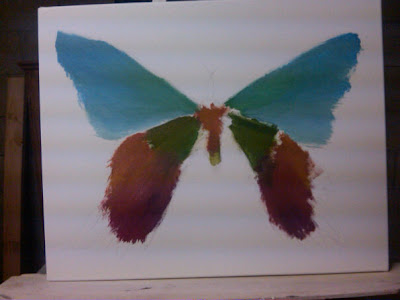 It is very intriguing to me. So not only do you want to draw what you see; one must see the layers to paint. This concept helped me to jump a minor hurdle.
It is very intriguing to me. So not only do you want to draw what you see; one must see the layers to paint. This concept helped me to jump a minor hurdle. 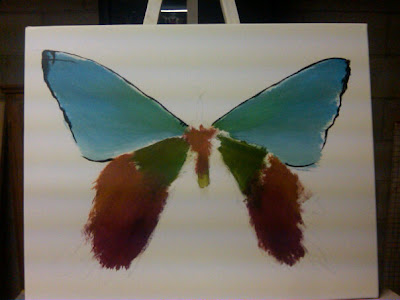 that I was struggling with.
that I was struggling with.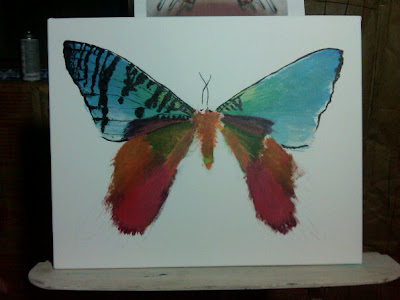 By the way, I do not yet know if this completely works with watercolor.
By the way, I do not yet know if this completely works with watercolor. 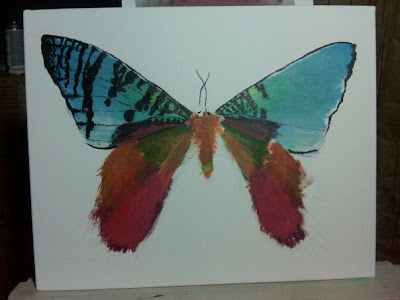 I guess someone will just have to try it out. =) any way enjoy and notice the layers!
I guess someone will just have to try it out. =) any way enjoy and notice the layers!
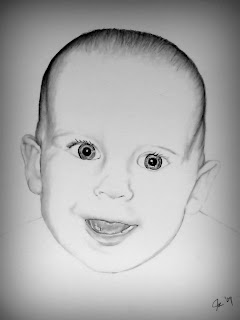 The human face is full of shapes and textures. There is so much to the drawing of a face! I think that this has so much to do with recognition of expression and aesthetics. The first thing I want to do is have you all do your best to draw a face of anyone you would like. We will then analyze in the next lesson how to draw the face. No cheating now! If you do not know who to draw, you can draw this baby face that I drew a while ago. Try not to research to deeply yet on the face....just draw one. I will not be mean; I promise. For some this may be a simple review. I understand. Have fun! =)
The human face is full of shapes and textures. There is so much to the drawing of a face! I think that this has so much to do with recognition of expression and aesthetics. The first thing I want to do is have you all do your best to draw a face of anyone you would like. We will then analyze in the next lesson how to draw the face. No cheating now! If you do not know who to draw, you can draw this baby face that I drew a while ago. Try not to research to deeply yet on the face....just draw one. I will not be mean; I promise. For some this may be a simple review. I understand. Have fun! =)
 Drawing reflections can be difficult, but they can also be a ton of fun. There are many different types of reflections. You can look at my Porsche drawing and notice many of these types of reflection. Metals, plastics, liquids, and just about any type of surface is capable of producing a reflection. I chose to draw a Christmas ornament. It is simple in its shape and easy to interpret the reflection. Lets get started.
Drawing reflections can be difficult, but they can also be a ton of fun. There are many different types of reflections. You can look at my Porsche drawing and notice many of these types of reflection. Metals, plastics, liquids, and just about any type of surface is capable of producing a reflection. I chose to draw a Christmas ornament. It is simple in its shape and easy to interpret the reflection. Lets get started.